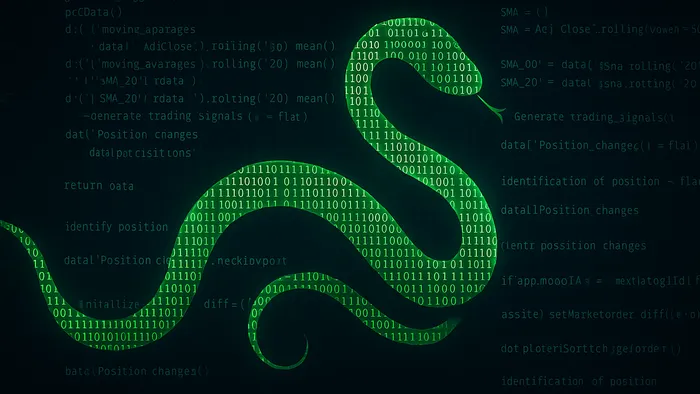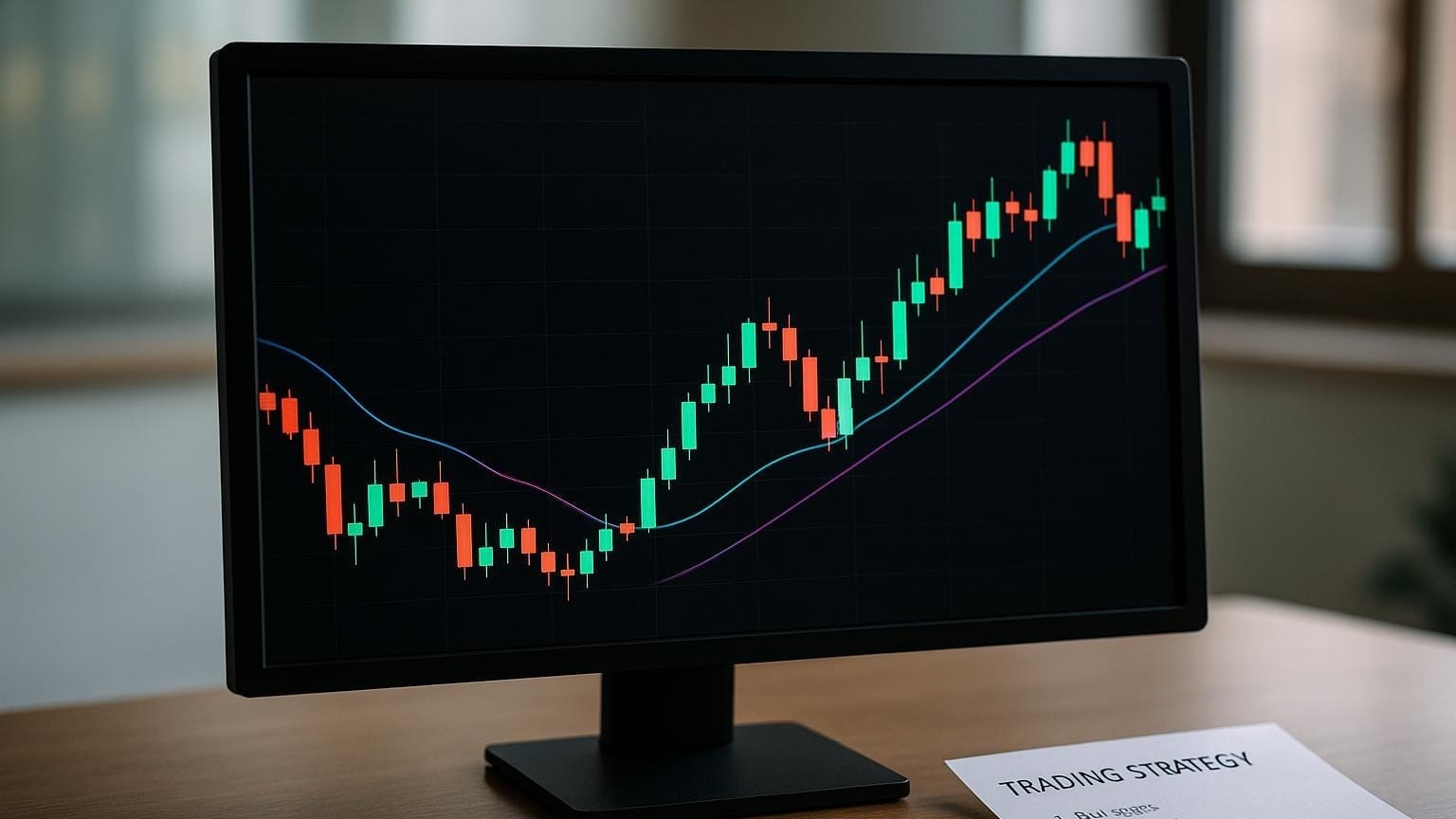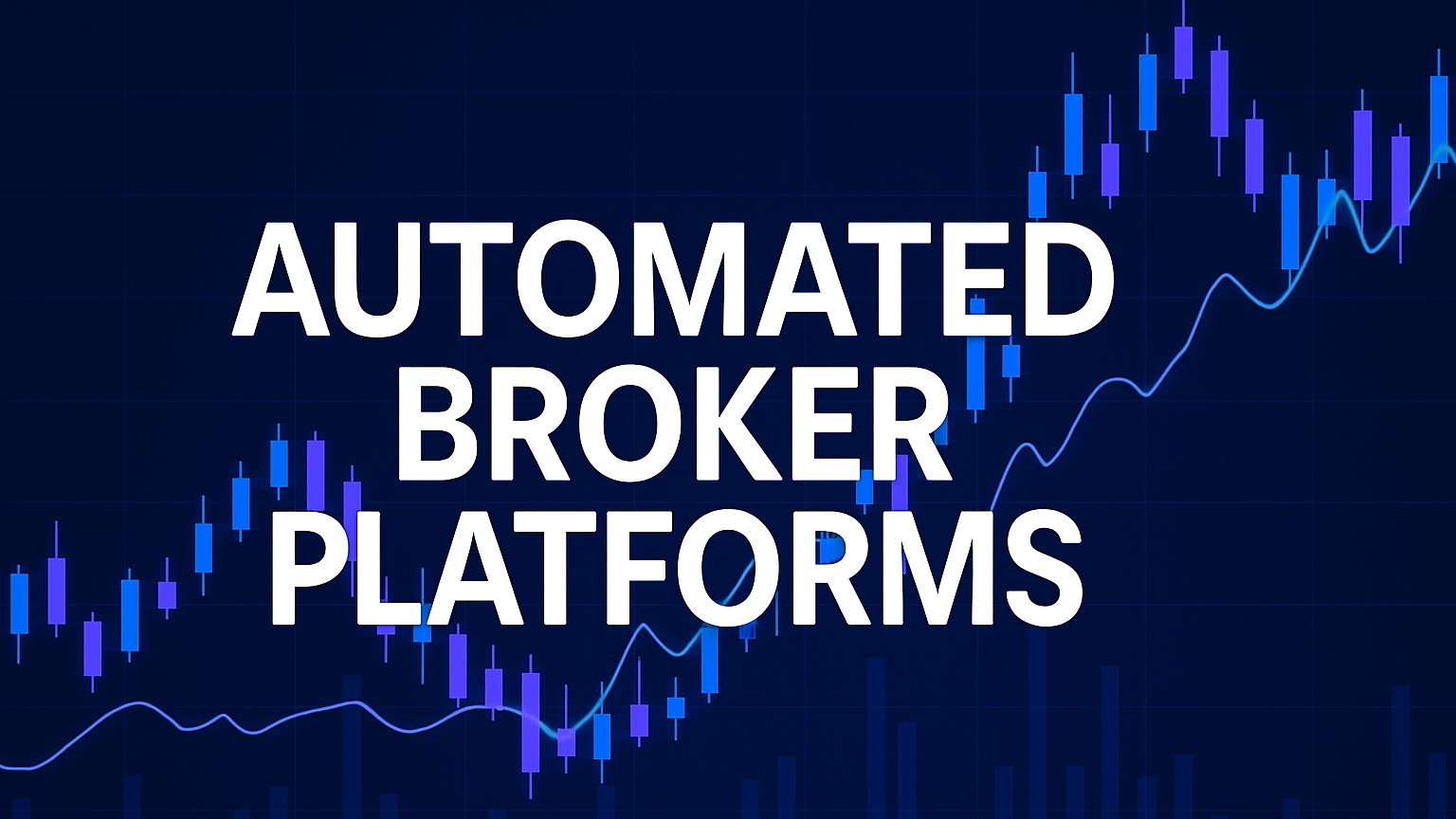Explore how Python revolutionizes trading with its powerful libraries, automation capabilities, and backtesting frameworks for effective strategy development.
Python is a game-changer for trading. It’s faster than Java (4.94×) and JavaScript (11.55×) for trading applications, thanks to its simple syntax and robust library ecosystem. Whether you're a finance professional, trader, or student, Python lets you analyse data, back-test strategies, and automate trades with ease.
Why Python for Trading?
- Rich libraries: Pandas, NumPy, and TA-Lib cover everything from data wrangling to technical indicators.
- Back-testing: Frameworks such as Backtrader let you validate ideas before risking capital.
- Automation: Python integrates smoothly with broker APIs for real-time execution.
- Visualisation: Matplotlib and Plotly deliver clean, interactive charts.
Key Skills You’ll Learn
- Data analysis with NumPy and Pandas
- Technical analysis with TA-Lib
- Strategy back-testing using Backtrader
- Automating trades with broker APIs
Quick setup: Install Python, create a virtual environment, and pip install numpy pandas yfinance. Add TA-Lib for advanced indicators such as MACD and RSI.
Bonus: LuxAlgo offers exclusive TradingView toolkits and an AI Backtesting platform that amplify Python-powered strategies with advanced indicators and automated strategy generation.
Ready to automate trading and refine strategies? Python is your go-to language for modern finance.
Algorithmic Trading Python for Beginners
Python Setup for Trading
Let’s build a solid trading environment step by step.
Key Python Libraries for Trading
Python’s power comes from its extensive library ecosystem:
| Category | Library | Purpose |
|---|---|---|
| Data processing | NumPy | Fast numerical computations |
| Data analysis | Pandas | Time-series and OHLC handling |
| Technical analysis | TA-Lib | 150+ indicators |
| Data retrieval | yfinance | Historical & real-time quotes |
| Visualisation | Matplotlib | Static charts |
| Strategy testing | Backtrader | Back-testing framework |
| Machine learning | Scikit-learn | Predictive modelling |
“Mastering the right Python libraries is essential for successfully taking strategies from research to live trading.”
Steps to Set Up Your Environment
- Install Python & set up a virtual environment
python --version python -m venv trading_env # Windows: trading_env\Scripts\activate # macOS/Linux: source trading_env/bin/activate - Install core libraries
pip install numpy pandas matplotlib yfinance scikit-learn - Install TA-Lib
- macOS
brew install ta-lib pip install TA-Lib - Linux
wget http://prdownloads.sourceforge.net/ta-lib/ta-lib-0.4.0-src.tar.gz tar -xzf ta-lib-0.4.0-src.tar.gz cd ta-lib ./configure --prefix=/usr make && sudo make install pip install TA-Lib - Windows – download a pre-compiled wheel and
pip installit.
- macOS
- Verify your setup
import numpy as np, pandas as pd, talib, yfinance as yf, matplotlib.pyplot as plt print("Setup successful!")
Keep your project tidy – create folders for raw data, processed data, and strategy scripts.
Market Data Management
Accurate data is the backbone of any algorithmic strategy.
Getting Market Data
import yfinance as yf
aapl = yf.download("AAPL", start="2024-01-01", end="2025-02-25", interval="1d")
ticker = yf.Ticker("AAPL")
dividends = ticker.dividends
splits = ticker.splits
| Provider | Advantages | Best for |
|---|---|---|
| Yahoo Finance | Free, wide coverage | Historical studies |
| Alpha Vantage | Real-time FX & crypto | Intraday trading |
| Twelve Data | Clean multi-asset data | Professional systems |
Data Preparation
import pandas as pd, numpy as np
def prepare_market_data(df):
df = df.drop_duplicates().ffill()
df["Returns"] = df["Close"].pct_change()
df["Log_Returns"] = np.log(df["Close"] / df["Close"].shift(1))
return df
aapl = prepare_market_data(aapl)
- Data quality – check price gaps and volume anomalies.
- Storage – save cleaned data in CSV, HDF5, or a database.
aapl.to_csv("processed_data/AAPL_daily.csv") aapl.to_hdf("market_data.h5", key="AAPL", mode="w")
Technical Analysis Code
Coding Technical Indicators
import talib, pandas as pd, numpy as np
macd, signal, hist = talib.MACD(aapl["Close"], fastperiod=16, slowperiod=20, signalperiod=6)
rsi = talib.RSI(aapl["Close"], timeperiod=14)
upper, mid, lower = talib.BBANDS(aapl["Close"], timeperiod=20, nbdevup=2, nbdevdn=2)
| Indicator | Use case | Common parameters |
|---|---|---|
| MACD | Trend shifts | 16-20-6 |
| RSI | Momentum extremes | 14 |
| Bollinger Bands | Volatility | 20, 2 σ |
| SMA | Trend direction | 50 / 200 |
Chart Creation
import matplotlib.pyplot as plt
def create_technical_chart(df, ticker):
fig, (ax1, ax2) = plt.subplots(2, 1, figsize=(12, 8), gridspec_kw={"height_ratios": [3, 1]})
ax1.plot(df.index, df["Close"], label="Price")
ax1.plot(df.index, df["Close"].rolling(50).mean(), label="50 MA")
ax1.set_title(f"{ticker} Technical Analysis")
ax1.legend()
ax2.plot(df.index, macd, label="MACD")
ax2.plot(df.index, signal, label="Signal")
ax2.bar(df.index, hist, label="Histogram")
ax2.legend()
plt.tight_layout()
return fig
# fig = create_technical_chart(aapl, "AAPL"); fig.savefig("technical_analysis.png")
“Relying on any single indicator is a recipe for failure – combine context for better decisions.” – Hassan K. Najjar
Key Implementation Tips
- Use vectorised operations for speed.
- Define clear entry and exit rules.
- Keep charts uncluttered.
- Double-check indicator maths.
An optimised MACD strategy for AAPL returned 1.95 %, showing the value of fine-tuned parameters.
Trading Strategy Development
Trading Rules in Code
import pandas as pd, numpy as np
def generate_signals(data: pd.DataFrame) -> pd.DataFrame:
"""Simple SMA-crossover strategy."""
data["SMA_50"] = data["Adj Close"].rolling(50).mean()
data["SMA_20"] = data["Adj Close"].rolling(20).mean()
data["Signal"] = np.where(data["SMA_20"] > data["SMA_50"], 1, 0)
data["Position"] = data["Signal"].diff()
return data
Strategy Testing
from backtesting import Backtest, Strategy
from backtesting.lib import crossover
from backtesting.test import SMA, GOOG
class MovingAverageCrossover(Strategy):
def init(self):
self.fast = self.I(SMA, self.data.Close, 20)
self.slow = self.I(SMA, self.data.Close, 50)
def next(self):
if crossover(self.fast, self.slow):
self.buy()
elif crossover(self.slow, self.fast):
self.sell()
if __name__ == "__main__":
bt = Backtest(GOOG, MovingAverageCrossover, cash=10_000, commission=0.002)
stats = bt.run()
bt.plot()
Performance Analysis
def analyse_performance(returns):
sharpe = (returns.mean() * 252) / (returns.std() * np.sqrt(252))
cumret = (1 + returns).cumprod()
drawdown = cumret / cumret.expanding().max() - 1
max_dd = drawdown.min()
return {"Sharpe": sharpe, "Max Drawdown": max_dd}
| Metric | Description | Target |
|---|---|---|
| Sharpe ratio | Risk-adjusted return | > 1.0 |
| Max drawdown | Peak-to-trough drop | < 20 % |
| Win rate | Profitable trades % | > 50 % |
| Profit factor | Gross profit / loss | > 1.5 |
“It is far better to foresee even without certainty than not to foresee at all.” – Henri Poincaré
Trading Automation
Python can run your strategy 24 / 7 and eliminate emotional decisions.
Broker API Integration
from ibapi.client import EClient
from ibapi.wrapper import EWrapper
from ibapi.contract import Contract
from ibapi.order import Order
class TradingApp(EWrapper, EClient):
def __init__(self, host="127.0.0.1", port=7497, client_id=1):
EClient.__init__(self, self)
self.nextOrderId = None
self.connect(host, port, client_id)
def error(self, reqId, code, msg):
print(f"Error {code}: {msg}")
def nextValidId(self, orderId):
self.nextOrderId = orderId
print("Connected – next order ID:", orderId)
app = TradingApp()
app.run() # launches event loop
| API type | Best for | Features | Connection |
|---|---|---|---|
| Web API | Retail | REST / WebSocket | HTTPS & WSS |
| TWS API | Active traders | Custom GUIs | Direct TWS |
| FIX API | Institutions | Ultra-low latency | VPN or leased line |
Trade Execution Code
def place_market_order(app, symbol: str, qty: int, action: str):
"""Send a market order via Interactive Brokers."""
contract = Contract()
contract.symbol, contract.secType = symbol, "STK"
contract.exchange, contract.currency = "SMART", "USD"
order = Order()
order.action = action.upper() # BUY or SELL
order.totalQuantity = qty
order.orderType = "MKT"
if app.nextOrderId is None:
raise RuntimeError("IB connection not ready")
app.placeOrder(app.nextOrderId, contract, order)
app.nextOrderId += 1
Keeping Your System Secure
- Store API keys in environment variables or an encrypted vault.
- Add robust error handling for disconnects and order rejects.
- Set risk limits – max position size, daily loss cap, etc.
“Everything is hackable if given enough time.” – Igor Radovanovic
Using LuxAlgo Indicators & AI Backtesting
LuxAlgo serves more than 15 000 traders by providing exclusive TradingView toolkits and an AI Backtesting platform. These integrate seamlessly with the Python workflows discussed above.
LuxAlgo Exclusive Toolkits
# Example – Triangular Momentum Oscillator
import luxalgo as lux
def calculate_momentum(df, period=14):
tmo = lux.TriangularMomentum(period=period)
return tmo.get_signals(df)
| Toolkit | Primary use | Key features |
|---|---|---|
| Price Action Concepts (PAC) | Pattern detection | Auto S&R, order blocks |
| Signals & Overlays (S&O) | Signal generation | Multi-algorithm signals |
| Oscillator Matrix (OSC) | Divergence insight | Real-time momentum |
Improving Strategies with LuxAlgo
import luxalgo as lux
def optimise_strategy(params):
backtester = lux.AI_Backtesting_Assistant(
timeframe="1h",
start_date="2024-01-01",
end_date="2025-02-25"
)
return backtester.run(params)
“Lux Algo has really stepped my trading up – there is a setup for any style you prefer.” – Kevin Ortega
- Use screeners to shortlist the best charts.
- Validate ideas with back-tests.
- Tune settings to match your account size and goals.
- Leverage AI tools for deeper optimisation.
The Ultimate plan (USD 59.99 / month) unlocks full access to AI Backtesting plus every LuxAlgo toolkit.
Summary and Resources
Main Points
Python drives around 60 % of US algorithmic stock trades and is the first choice for 50 % of data analysts – a testament to its versatility.
| Aspect | Benefit | Impact |
|---|---|---|
| Development speed | Rapid prototyping | Faster strategy tweaks |
| Data handling | Efficient processing | Better pattern discovery |
| Library support | Huge ecosystem | Advanced analytics |
| Automation | Instant actions | Emotion-free execution |
Learning Resources
| Course | Rating | Reviews | Focus |
|---|---|---|---|
| Trading Algorithms | 4.5 / 5 | 1.1 k | Strategy design |
| Trading in Emerging Markets | 4.2 / 5 | 2.7 k | Market specifics |
| Python & Statistics for Finance | 4.4 / 5 | 4.4 k | Quant methods |
A standout is Ali Habibnia’s Algorithmic Trading with Python (262 GitHub stars, 61 forks) – it spans beginner concepts to advanced integrations with brokers such as Thinkorswim and Binance.
For continuous learning:
- PyQuant News – twice-weekly quant snippets.
- QuantConnect – community and research.
- Open-source frameworks – Backtrader, Zipline, VectorBT.








